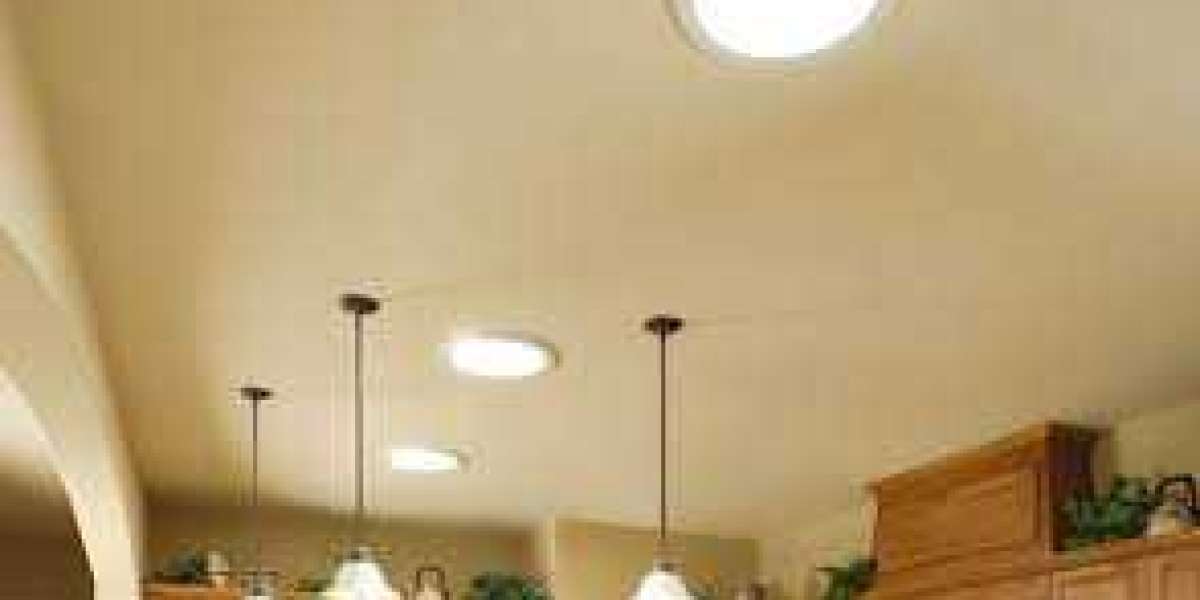Solar tubes are the ultimate solar light. Solar tubes are skylights with a tube connected down through the roof to the ceiling. With a solar tube there is no electricity, light from the outside is passed through the tube to a window in the ceiling that looks like a light fixture.Save environment save life. Do you want to be a part of this campaign. Then Hurry up to convert your lights to solatube skylight. Lightening direct gives you the super option to save environment and is also less expensive.
Solar sky lights are great if you have a dark area that you'd like to brighten up with some natural light. In my home I had a dark stairwell leading to the second floor. It bothered me to have to turn on the light in the middle of the day so I decided to install a sky light. We love it. During the day it lights up the whole stairwell, even at night, when the moon is out, we get some nice light on the stairs.
So now you're wondering how much do these types of sky lights cost and how complicated are they to install. You might be surprised at how cheap they are. For less than $500 you have one installed. It installation is also pretty easy, however the average homeowner will probably want to hire a contractor. In order to install a solar tube you have to get on top of your roof and you have to crawl around in your attic.
The next question that comes to mind is where can you buy a solar tube and who can you get to install it for you. Any experienced roofing contractor that you find in the Yellow Pages should be able to install your solar tube, in fact they should be able provide you with a solar tube also.
If you're thinking about installing a solar tube and you want to make sure you don't pay too much hair's a few things you should know: roofing contractors don't buy their supplies at Lowe's or Home Depot to buy their supplies from wholesale roofing supply houses. So your first step would be to check your yellow pages and look for roofing material suppliers Bradco and ABC supply or two well-known supply houses. Call your local supplier and check on prices so that when you are negotiating with at your local roofing contractor you know about how much you should be paying for a solar tube in your area. An even better tactic is to tell your installer that all you want is a quote for labor and that if he tells you exactly what you need for material you'll pay for it directly. The labor to install the tube should not be more than 250 $300 depending on how complicated your roof and attic are to access.
Every time the sun shining in through our solar to or the moon is shining bright through our solar to I get a big smile on my face. Not only do I have natural light during the day and sometimes at night but I'm saving money to because I didn't have to turn on the light in the middle of the day.
John E. Newman
For all kinds of information on outdoor solar lights [http://solarlightspage.com/all-about-solar-lights/] or outdoor lighting [http://solarlightspage.com/all-about-outdoor-lighting/] or anything in this article just follow the links. I hope this information was helpful.
Solar tubes for indoor lighting are a cost-effective way of brightening up any windowless room in your house as opposed to using electrical sources of lighting. Since these utilize a renewable energy source, which is the sun, solar tubes for indoor lighting don't only reduce environmental pollution, but these also help cut down your monthly energy bills.
Solar tubes for indoor lighting work at a pretty simple mechanism. The solar tube dome, which is installed on your rooftop, is responsible for capturing sunlight at different directions. This captured light is then reflected on the interior tubing, and then distributed into the room using a diffuser lens.
Before scouting for any high-quality indoor solar tube products, it is very important that you should gather enough information on how to go about in buying these. This will help in making sure that you'll have all the important materials included in your installation kit. One of the first things you need to do is to check the area where you need these fixtures, including the slope of your roof.
The type of flashing you need is dependent on the specific type of roof you have. Flashing with a flat base, or a 4-inch wide base, are ideal for roofs with flat surface areas. Roofs with inclination ratio of 4:12 to 12:12 will usually require inclined or pitched flashing. But if your roof has clay roofing tiles, a special aluminum flashing skirt is normally required to complete the installation.
The amount of light that can be diffused in a room is mostly determined by the diameter of the tube. As you might have guessed, the higher the value, the wider coverage it can give out. Angled extension tubes, ranging from 0 to 90 degree angles, are also offered for roof interiors that involve complex structures.
The diffuser lens will typically dictate the quality of light that's projected into your home. There are a wide variety of diffuser lenses in the market today. Each of these brings different light effects. If you're looking for a crisp and very modern light effect, a frosted diffuser lens is highly qualified to fulfill that type of application.
Aside from indoor solar tubes, a solar attic fan is normally used in some homes as a way to reduce the heat and moisture build up in their attic, which amazingly results to its prolonged lifespan and reduced cooling costs.
In most cases, installing a solar tube is considered as a do-it-yourself project, well, at least, for those who are skilled in carpentry works. Besides, the installation instruction is already included in the kit, so you don't need to do some guessing games. But if you're not confident enough with your skills, you can always hire a professional to do the job of installing your indoor lighting.
These are just a few of the options available with solar tubes for indoor lighting.
Next, discover how you can save money and be eco-friendly all at the same time



